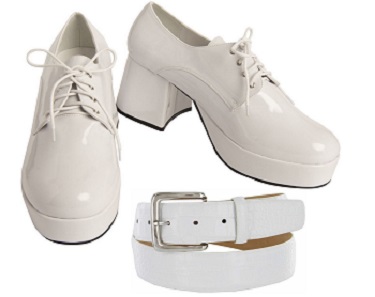Ultra-Whatband? Ultra-Wideband!
September 22, 2021
Thanks to Verizon’s 5G marketing campaigns, there’s a boatload of confusion about what ultra-wideband (UWB) is and why it matters. Those of us fortunate enough to work around UWB technology and products would never confuse it for a 5G data plan, but let’s quickly bust a few UWB myths for everyone else.
UWB is not:
- Texas A&M’s 400+ member Fightin’ Texas Aggie Band, which is wide enough to span the entire length of a football field.
- A white belt worn during the 1970s to complement white shoes and a silk shirt — it’s not ultra-whiteband.
- A description of my midriff following a glutenous holiday season.
- Extremely accurate at measuring distances: to within a few centimeters.
- Precise over a greater range than Bluetooth or NFC: as much as 200 meters.
- Low latency: uses fast 2 ns pulses to reach 10s of Mbps data rates.
- Coming soon to a smartphone near you.

While UWB technology has been around since the 1990s, it was Apple that raised the curtain on UWB in 2019 by incorporating the U1 chip into the iPhone 11. The “U” in U1 stands for UWB. While initially used for “spatial awareness” of other U1-equipped iPhone 11s and enabling Apple’s AirDrop feature, UWB is now also being used for the precise location of AirTags and for a smooth hand-off between phone and speaker in a HomePod mini.
Because UWB is small, inexpensive and consumes very little power, it can be easily integrated into many “able” products - wearables, hearables, portables, hugables, valuables - so we can remember exactly where we left them. UWB not only brings us closer to the things we care about, but it helps many people stay safely distanced from others during COVID-19. KINEXON’s SafeTag wearables are helping the NBA, NCAA, NFL and MLB stay safe from COVID exposure by using UWB to keep athletes healthy and safely distanced as they practice and train.
Another feature of UWB is its strong security, a “key” reason why the Car Connectivity Consortium (CCC) sees mobile devices becoming true digital keys for cars. CCC’s Digital Key combines Bluetooth Low Energy (BLE) and UWB to enable passive keyless access and engine start without ever taking your smartphone out of your pocket or purse. After authenticating the Digital Key between a vehicle and a smartphone over a short-range BLE connection, a secure ranging session with UWB enables the vehicle to perform secure and accurate distance measurement to localize the mobile device. Voila, your smartphone is now your car key. Now, even I would have trouble locking myself out of the car!
UWB operates in a frequency range between 6.5 and 9 GHz, so it won’t interfere with Wi-Fi, Bluetooth, GPS or other popular wireless formats. This means UWB not only peacefully coexists in a home buzzing with myriad tech gadgets, it enables a truly smart home where a person’s preferences for lighting, temperature, music and entertainment follow them through the house. You can see an example of how that works in Qorvo’s The Future is Ultra-Wideband video.
In addition to remote access to our cars and homes, UWB will enable many new applications in the connected home, indoor navigation, contactless payment, factory automation and other use cases. The biggest challenge with UWB will be figuring what to do with the 5,000 hours of our lives no longer spent searching for lost things around the house. That should be just enough time to binge-watch the 20+ seasons of Law & Order I missed!
This article first appeared in Brent's Musings in Microwave Journal.
Have another topic that you would like Qorvo experts to cover? Email your suggestions to the Qorvo Blog team and it could be featured in an upcoming post. Please include your contact information in the body of the email.
